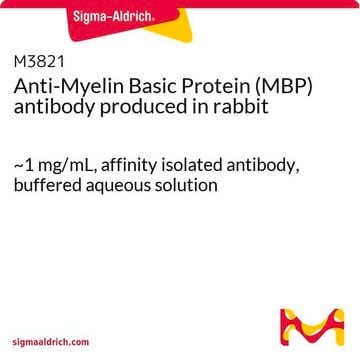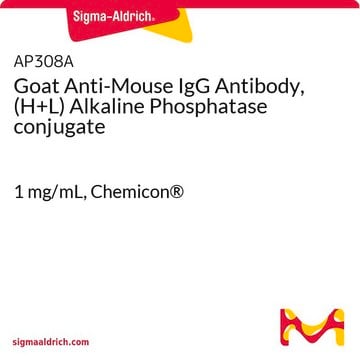AB19013
Anti-Tenascin Antibody
Chemicon®, from rabbit
Synonim(y):
Anti-150-225, Anti-DFNA56, Anti-GMEM, Anti-GP, Anti-HXB, Anti-JI, Anti-TN, Anti-TN-C
About This Item
Polecane produkty
pochodzenie biologiczne
rabbit
Poziom jakości
forma przeciwciała
affinity isolated antibody
rodzaj przeciwciała
primary antibodies
klon
polyclonal
oczyszczone przez
affinity chromatography
reaktywność gatunkowa
chicken, human
producent / nazwa handlowa
Chemicon®
metody
immunohistochemistry (formalin-fixed, paraffin-embedded sections): suitable
numer dostępu NCBI
numer dostępu UniProt
Warunki transportu
dry ice
docelowa modyfikacja potranslacyjna
unmodified
informacje o genach
human ... TNC(3371)
Specyficzność
Immunogen
Zastosowanie
Western blot: Antibody recognizes a 220-240kDa band in reduced westerns; antibody reacts best with chicken, followed by human (100X less reactive). Mouse reactivity under reduced conditions is poor.
Immunohistochemistry: frozen and paraffin embedded tissues; citrate treatment useful for paraffin tissues.
Optimal working dilutions must be determined by the end user.
Cell Structure
ECM Proteins
Powiązanie
Postać fizyczna
Przechowywanie i stabilność
Komentarz do analizy
Embryonic chicken brain
Inne uwagi
Informacje prawne
Oświadczenie o zrzeczeniu się odpowiedzialności
Not finding the right product?
Try our Narzędzie selektora produktów.
Kod klasy składowania
12 - Non Combustible Liquids
Klasa zagrożenia wodnego (WGK)
WGK 2
Temperatura zapłonu (°F)
Not applicable
Temperatura zapłonu (°C)
Not applicable
Certyfikaty analizy (CoA)
Poszukaj Certyfikaty analizy (CoA), wpisując numer partii/serii produktów. Numery serii i partii można znaleźć na etykiecie produktu po słowach „seria” lub „partia”.
Masz już ten produkt?
Dokumenty związane z niedawno zakupionymi produktami zostały zamieszczone w Bibliotece dokumentów.
Nasz zespół naukowców ma doświadczenie we wszystkich obszarach badań, w tym w naukach przyrodniczych, materiałoznawstwie, syntezie chemicznej, chromatografii, analityce i wielu innych dziedzinach.
Skontaktuj się z zespołem ds. pomocy technicznej








